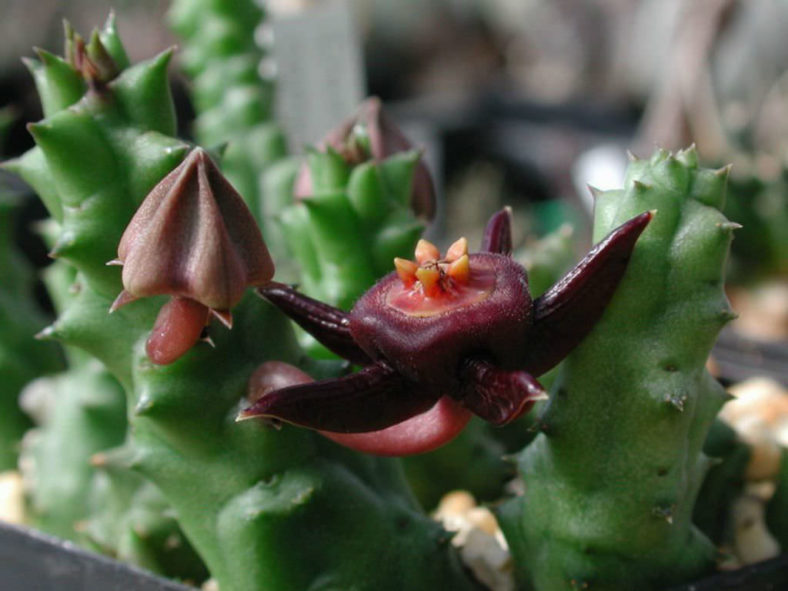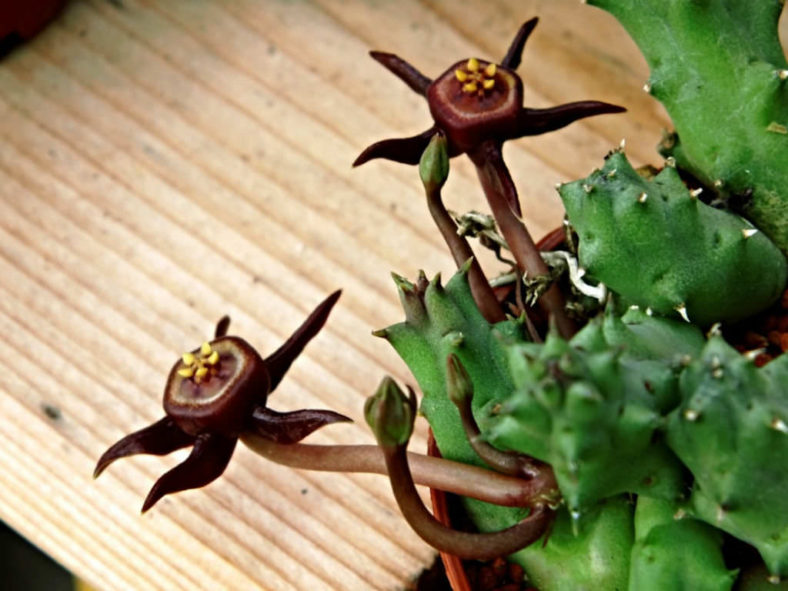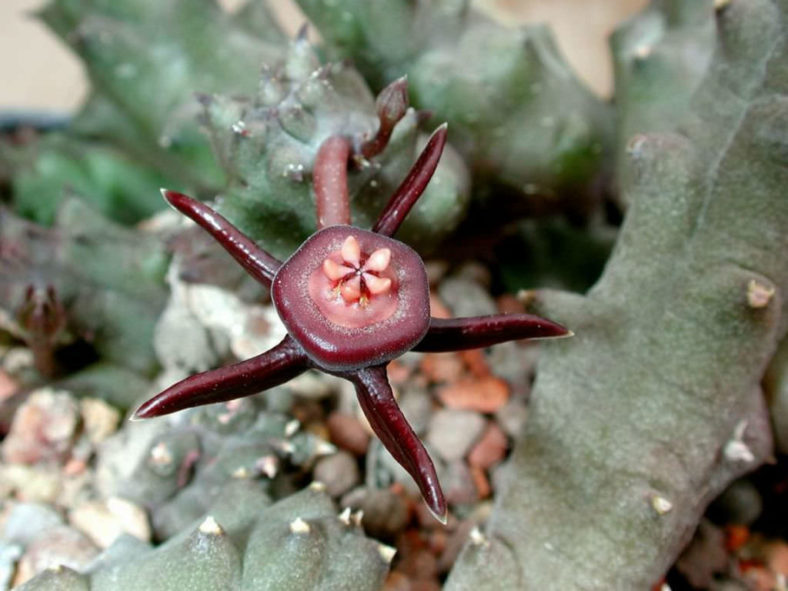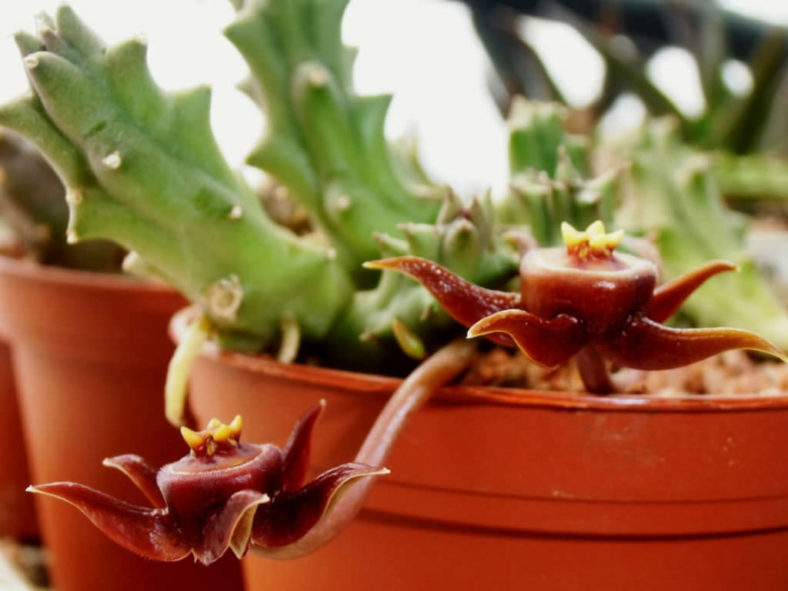Scientific Name
Duvalia caespitosa Haw.
Synonym(s)
Ceropegia caespitosa, Duvalia caespitosa var. caespitosa, Stapelia caespitosa, Stisseria caespitosa
Scientific Classification
Family: Apocynaceae
Subfamily: Asclepiadoideae
Tribe: Ceropegieae
Subtribe: Stapeliinae
Genus: Duvalia
Etymology
The specific epithet "caespitosa" (pronounced "kess-pi-TOH-suh") means "turf, grass (attributive)" and refers to the growth habit of this species.
Origin
Duvalia caespitosa is native to South Africa and occurs primarily in the Western Cape and Eastern Cape, with occasional sightings in the Free State province.
Description
Duvalia caespitosa is a small succulent with 4- to 5-angled, dark green to purplish stems that branch at the base, forming a compact clump over time. The stems have leaf rudiments along the ribs and can grow up to 5.2 inches (13 cm) long and 0.9 inches (2.2 cm) thick.
The flowers appear solitary or in pairs from the lower parts of young stems, usually in fall. They are dark chocolate or deep purple, star-shaped, with five narrow corolla lobes that spread horizontally around the raised annulus. The corona in the center of the flower is orange-brown to yellow on a reddish-brown to yellowish-green base.

Hardiness
USDA hardiness zone 11a to 11b: from 40°F (4.4°C) to 50°F (10°C).
How to Grow and Care
Stapeliads are relatively easy to grow. However, they should be treated as outdoor plants as they will easily rot indoors and cannot flower without exposure to outdoor temperature fluctuations. They should be grown under cover so that watering can be controlled. They require a reasonable amount of sunlight to promote flowering and maintain a well-shaped plant. Very shady positions will produce very poor flowering. Stapeliads come from climates where they survive extremely high temperatures in the summer months, so most growth is in spring and autumn, with flowering in autumn when the weather starts to cool down. Water in moderation when needed during the growing season, ensuring the soil is pretty dry between waterings. Do not water between November 1 and March 1.
The easiest and best way to propagate Stapeliads is from stem cuttings, which can be taken virtually throughout the year. Seed is also a method of propagation.
See more at How to Grow and Care for Stapeliads.
Subspecies and Varieties
- Duvalia caespitosa var. compacta
- Duvalia caespitosa subsp. pubescens
- Duvalia caespitosa subsp. vestita
Links
- Back to genus Duvalia
- Succupedia: Browse succulents by Scientific Name, Common Name, Genus, Family, USDA Hardiness Zone, Origin, or cacti by Genus
Photo Gallery
Click on a photo to see a larger version.


